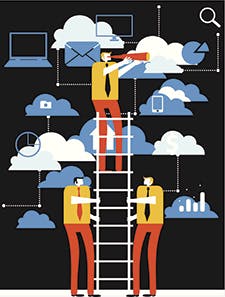At the June American Society of Safety Engineers (ASSE) professional development conference in Orlando, at previous ASSE PDC's and in my reading of EHS Today and Professional Safety, I constantly hear about good ideas to improve safety performance by doing things TO employees to get participation, buy-in, commitment, etc. Empowerment often is discussed.
In the June 2014 issue of EHS Today, Cary Usrey shares many good ideas in his article, "Safety Leadership Systems." Bernd Freibott also shares good ideas in his article, "A Roadmap For Holistic EHS Management." Kent Hatcher, in "Don't Just Train Your Employees, Engage Them," points us in the direction of more engagement. Safety is a complex system, and a multi-level approach is necessary.
When I was the manager of a large chemical plant with 1,100 employees handling many highly hazardous materials, I struggled with trying to improve our safety performance. It was very poor – a TRIR of about 6.8 – when I was assigned there.
I read a lot of safety materials, and I had lots of pressure from the upper corporate levels. I really wanted to improve our performance since my mantra was, "I do not have a right to make my living at a place where it is okay for people to get hurt."
I tried to drive safety improvement from the top with only limited success. The traditional top-down approach got me into the troubles that Terry Mathis talks about in his June 2014 EHS Today article, "The Confrontation Calamity." Doing things TO people has its limitations and offers limited success.
Achieving Buy-In
As the plant manager, I got all kinds of advice about how to "make" employees buy in to working safely. No one showed me how to get it to happen. People vigorously resisted every change we tried to implement, it was hard to get the workforce to adopt new ideas.
How do you really do this in an environment where you are running highly hazardous operations 24/7 with the potential for BIG safety problems and labor unrest? This was very frustrating. There is an old Spanish saying, "It is a lot easier to talk about the bull than be in the ring." I was in the ring!
I'd also found that improvements achieved through a hardline, top-down approach were not sustainable. As soon as our attention shifted to quality or productivity or community relations, the safety performance began to slip back to poorer levels of performance. This is a very energy-intensive approach to safety improvements.
Through my own studies, beginning around 1985 and continuing today, I learned about chaos theory, complexity theory, complex adaptive systems and complex responsive processes. Sydney Dekker in his 2014 ASSE PDC Keynote spoke about the need for new thinking and ways of working together.
Safety Is a Complex System
Occupational safety, occupational health and process safety management are a complex system with all the training, rules, procedures, complicated technology, processes and equipment as well as all the people interacting with these in an ever-changing environment. The system is very dynamic.
The importance of engaging the entire system is huge. I developed a tool that worked well for me in bringing people together to engage in dialogue about the important issues facing them, like improving safety performance.
A cross-section of people from across the organization, from all levels, came together for this highly structured dialogue. We met to discuss the tough problems – listening, sharing, discussing, exploring for better ways to work together to create a safer, more effective workplace. We wrestled with the issues of accountability, responsibility, openness and trust. Everything was on the table.
Since then, I have used this tool to assess challenges in kinds of organizations in many different countries. This process always works when people are willing to engage this way.
I called the tool the Process Enneagram1(see Figure 1).
When we engage in this dialogue with the Process Enneagram, new information emerges, new relationships form, new pathways for communications open up, new agreements about how we are going to partner in this important work are established. Trust and interdependence build. Energy and commitment are released.
All employees, not just the safety professional, play a role in developing the strategic plan. This creates the conditions where people can become empowered, can speak their truth and are heard, and it helps to create a new, safer, more sustainable future. As people co-create their future, resistance to change virtually disappears. Achieving much-better levels of performance occurs almost immediately.
Real-World Results
In this large chemical plant where I was the manager, we cut injury rates by about 96 percent, productivity rose about 45 percent, emissions dropped by about 87 percent and earnings rose about 300 percent. When we learned to partner with the employees, thereby building trust and interdependence, other opportunities opened up for improving the business beyond safety.
Partnering for safety and business excellence is a robust, proven approach to working with employees to achieve sustainable safety excellence.
Richard N. Knowles, Ph.D., has a combined 36 years of experience in a large organization with 25 years of study of theories of systematics, chaos, complexity, complex adaptive systems and complex responsive rrocesses. He is the owner of Richard N. Knowles & Associates Inc.
1Richard N. Knowles, 2002. The Leadership Dance, Pathways to Extraordinary Organizational Effectiveness. ISBN 0-9721204-0-8.


